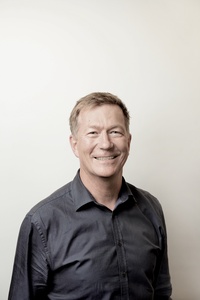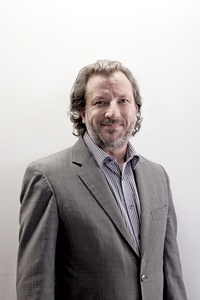Not Yet Known?
Tim Hooson, formerly the main interiors man at Jasmax, explains the concept behind NotYetKnown, the firm’s recently formed strategic and creative consultancy.
For the best part of 10 years, I’ve been running a couple of teams. One, of course, is a traditional design team but another team has been looking at placing key questions about the workplace in front of clients. Questions like: What does your organisation look like in three years’ time? What’s driving your organisation? What are the future direction, strategies and priorities you are coming up against? We referred to that as a workplace strategy team, and it came about because some of the challenges clients were asking us to look at and help them solve were not architectural in nature.
If I look at the members of the education team within Jasmax, which is focused fundamentally on pre-tertiary, they are probably now some of the standout leaders in the business of innovative learning environments, and yet we only ever apply that knowledge when a school asks us to build a new innovative learning environment.

There’s a whole lot of IP we’re building within Jasmax that we’re simply not leveraging and it is deeply sought after; the innovative learning environments are a classic example. Can we influence futures wider than just the built environment? Yes we can. Do we have the requisite courage and skill to step into that space? Well, potentially: let’s start to review that.
So we started building a proposition which led to NotYetKnown, which, fundamentally, is looking at opportunities and challenges that might lead to transformational change as opposed to incremental change. NotYetKnown is a deliberate descriptor of the very environment in which we work. Jasmax operates in effectively one sector: the built environment sector. NotYetKnown is almost exactly the opposite. It’s almost turning around asking: is it cross-sectoral?
A key point of difference is applying creative thinking skills and processes to problems. The creative lens fundamentally allows us to ask the kinds of question that we should be asking but nobody ever does.
NotYetKnown is setting up to work in a non-traditional manner, which I think, ultimately is going to be the way a substantial part of our economy will work within the next 10 – 15 years: very collective and more about outcomes as opposed to process. Our roles now are to seek out the market and broaden it from just being a work and organisational design focus to being more of a societal focus. How can we assist the health sector to avoid continuing in the direction it’s going, or how do we shift the delivery of housing for Auckland into some model other than the current one?

Initially, I had imagined clients would still be large corporates and institutional operators. What we’ve found is local and central government, institutional operators like universities, health boards and boards of trustees for education, and large corporates have become our target market, because those are the ones having to confront the big, hairy audacious challenges.
We are enganged with ATEED, Auckland Tourism Events and Economic Development, a CCO of the Auckland Council, assisting them with what is referred to as the Innovation Hub in Wynyard Quarter.
There are some design exercises there but what we’re looking at really is what an innovation ecosystem and economy would look like for Auckland. How do you connect up the innovation sectors already operating in wider Auckland? What is the role of a regional council to put the core ingredients in place? How much does it commit or invest or underwrite to build an economy on this basis?
Recently, I’ve engaged internationally with public sector groups that have started setting up these innovation units. They’re doing so because they simply look within the normal process and expect a bureaucracy is required to manage the operation of a city. You start to realise the conversations we’re having around building an innovation ecosystem within Auckland won’t happen inside that process. So we’re seeing a huge amount of laboratory works, which are being set up by public sectors specifically to look at innovative and different ways of going about some of the challenges.
You have a society committed to staying in and rebuilding Christchurch. The government’s interactions have led to 18, from memory, anchor projects. They can build those projects and allow the community to occupy them and utilise them over time, but they’ve put a huge investment in there. If they can encourage the community to engage with them faster, sooner – that is, know how to operate them, what the purpose of them is – that, in turn, means they get a much more rapid return on their investment, so the whole thing starts to lock together and you achieve a more vital city more quickly.
I’ll acknowledge that the business as a concept is not understood implicitly by everybody but, in particular, those people confronting big-picture issues understand those conversations, and they also understand the difficulty of realising other ways of thinking around it. The shift is: how can you start to go about those in a way which isn’t just going to lead into a morass of tangential issues that are not going to bring them any closer to the answer?
NotYetKnown is a fledgling business and the proof will be evidenced very much by the initial outcomes of it, so I think that will help the conversation.










